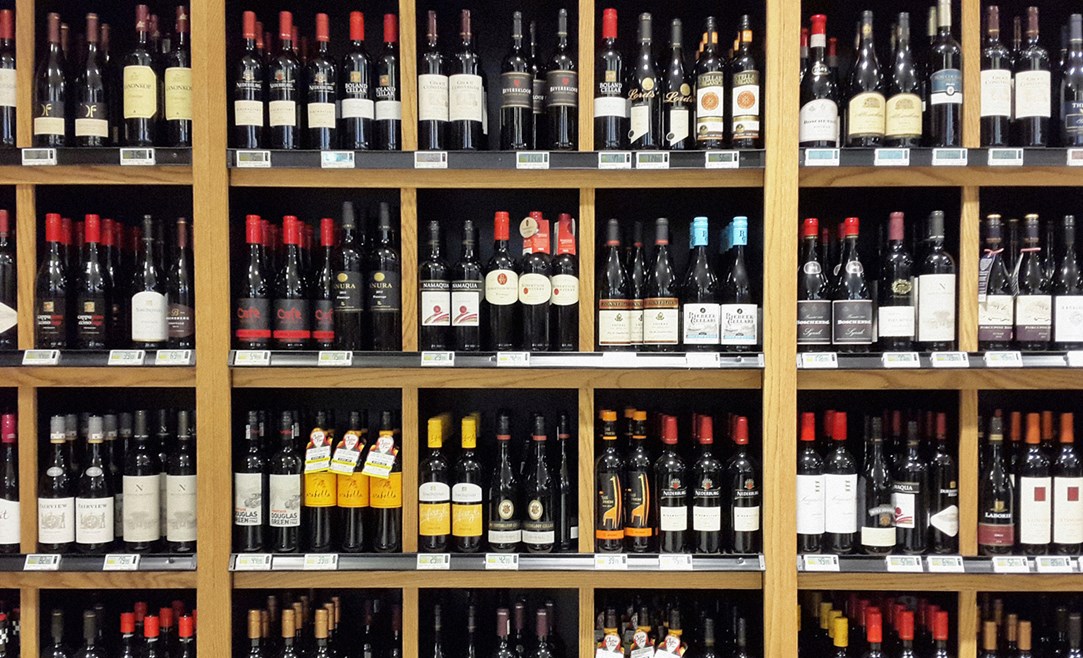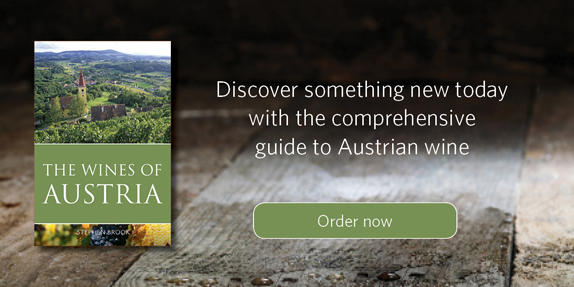Where can you get great Austrian wine?
30 November 2015 by Catherine Holdsworth in Classic Wine Library, Wine and spirits
No, this isn’t a joke, we’re not going to throw in a punch line that will undoubtedly fall flat. Austrian wine is relatively rare on the supermarket shelves and in the fridges of avid wine drinkers and yet it is experiencing something of a renaissance in quality and popularity. Of course, as a publisher, we would advise that if you are new to Austrian wine, or even if you aren’t, that you read The wines of Austria by Stephen Brook, which provides a comprehensive analysis of the different producers of Austrian wine.
Going straight to the vineyards for a spot of tasting and then leaving with a few cases would, we’re assuming, be the ideal way we all acquire wine. But since Austrian vineyards are currently out of season and your holiday would most likely be on the chilly side, we’ve done the scouting for you so that, if you fancy it, you can pick up a great bottle of Austrian wine when you’re next doing your weekly shop. Luckily, we’ve been able to give you excellent notes on the vineyards in which these wines are produced, all from Stephen Brook’s excellent book.

Waitrose perhaps has the best selection of Austrian wine, and the grape most famously associated with Austrian wine is in both their 5 star white wine offerings. The first is from Domane Wachau:
There are 440 hectares of vineyards cultivated by 250 families, and 70 per cent of the
vines are Grüner Veltliner. For many tourists the cooperative’s tasting room is an essential stopping place, so it is not surprising that a good deal of the production is of fairly commercial wines. The largest volumes of their more classic wines were released under the Terrassen Thal label, but today there is increasing emphasis on single-vineyard wines. This is sensible as the cooperative’s members are richly endowed with exceptional sites. [However,] [i]t’s the single-vineyard white wines that are the core of production.
I’ve tasted wines made here in the late 1960s and they were still excellent, but they were made in a sweeter style than would be acceptable today. Although not all of the wines are outstanding, the general quality level is astonishingly high. It doesn’t hurt that the cooperative has access to such sites as Pichlpoint, Achleiten, Singerriedel, Loibenberg, and Kellerberg. The Smaragd wines in particular can be exceptional and long lived. It’s also worth looking for other varieties such as Neuburger and Roter Traminer, which can also be of high quality.
Waitrose’s second offering of white wine comes from the vineyard of Markus Huber:
[The Huber vineyard] release[s] a number of different Grüner Veltliners, including Oberer Steigen from 35-year-old vines, the single-vineyard Berg, and the weightier Alte Setzen, a DAC Reserve made from vines up to 65 years old. The two top Rieslings are Engelsberg, a blend from two sites, and Berg, a DAC Reserve aged both in casks and steel tanks. In certain years he also produces an excellent Riesling Eiswein. The top wines are fermented in neutral Austrian acacia casks, and aged for 9 months on the fine lees. Huber is skilled and ambitious, and his wines are stylistically consistent, showing great clarity and a dry structure. Riesling Berg and Grüner Veltliner Alte Setzen are usually the top wines, but the other bottlings are very close in quality. The top wines age effortlessly, although they are accessible young.
The highly rated red wine selection offered by Waitrose are both from Rabl’s vineyard: Schenkenbichl Reisling Reserve and Titan Zweigelt, as is Marks and Spencer’s Rabl Grüner Veltliner:
A large estate, Rabl supplements its own 80 hectares of vineyards by purchasing from another 20 hectares. Grüner Veltliner comes from Spiegel, Käferberg, and Dechant, and Riesling from Schenkenbichl. The Rabls father and son, both named Rudolf, are often, though not dogmatically, proponents of skin contact rather than whole-cluster pressing, which may account for the supple texture of their wines. The Rabls also produce sweet wines quite frequently; in 2006 there was an opulent Traminer Auslese and a silky Grüner Veltliner Eiswein, and a splendid, pineappley Grüner Veltliner TBA, and there were more in 2007 and 2011. In 2012 and 2013 they excelled with the Grüner Veltliner Käferberg ‘Alte Reben’, wines of weight, concentration, and flair.
So there you have it, Austrian wine is infiltrating the UK’s wine market once again and, with these excellent facts about their origins, you’re sure to impress at your next dinner party.

